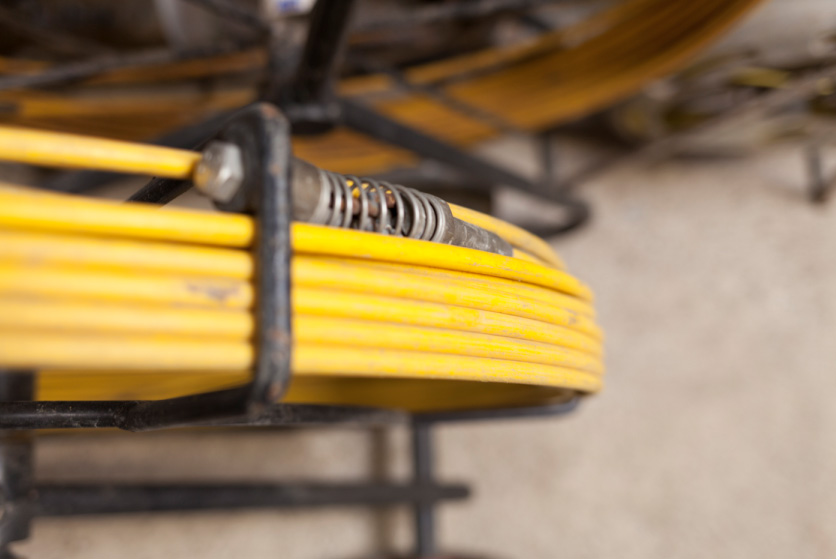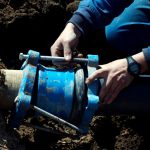How Are Water Leaks Traced?
For a problem with potentially serious consequences water leaks are not all that obvious. Indeed, many homeowners or businesses are only alerted to an issue when asked to foot a sizable bill, when said issue becomes all too real….
While the leak may not be visible damage could still have been taking place for quite some time. Detecting leaks is then essential, even in cases where no surface evidence is visible. It is also worth noting that once a leak has been detected by the water network operator, a business will be issued with a statutory Waste Water Notification, giving them 14 days to take action.
At such time companies like Pipefix come into their own. Utilising a range of methods specially trained engineers are on-hand to both identify and repair leaks, sometimes in just a single day – allaying fears and sparing expense in the process.
So how exactly is this achieved?
Thankfully technology is now such that there is no immediate need for drilling or excavation; instead an exploratory phase is started.
Operatives will typically run a series of questions past an incumbent – ascertaining how long the leak has been running, whether any hazardous situations have arisen and – crucially – if vulnerable persons are at risk. An unusable water system will also hasten need and process respectively.
Once the exact nature of the leak is established instructions can be uploaded to servicemen working within the field. Mobility means they can reach jobs quickly, already armed with information on exactly what awaits them.
A period of inspection and testing will then follow – one facilitated by any one of a number of exploratory tools. Amongst the equipment currently available are:
Acoustic Microphones
Ultra-sensitive microphones are worth their weight in gold when deployed to identify a potential water leak. Significantly they pick up on sounds synonymous with damaged pipe, differentiating those from mere background noise. This helps to target the area in question and focus attentions.
 Leak Noise Correlation
Leak Noise Correlation
Not too dissimilar to the aforementioned microphones, Leak Noise Correlation is a process whereby two sensors are placed in contact with pipe at either end of a suspected leak. Engineers are able to determine the exact location of a noise – such as hissing or gushing – by measuring the distance it takes for audio to travel between one sensor and another.
Moisture Meters
Moisture meters are designed to gauge the level of damp above or underground. Readings are taken courtesy of either radio frequencies or a small hole drilled to allow for inspection.
Their real benefit is the fact they allow engineers to piece together the lay of the land (or pipe) through taking numerous readings.
Thermal Images
Thermal imaging cameras are invaluable in search of hidden leaks on hot water systems. They function by recording heat as light and highlight pressure points by indicating differences in temperature. The latter is demonstrated by a change in colour.
Ordinarily a leak will be demonstrated by a warmer surface area – showing red where you would expect to see green. This is all fed back to ground level and helps in the diagnosis of leaks beneath the likes of walls, concrete and cavities.
As for the types of pipe in which leaks can be traced and repaired – they include everything from MDPE to HPPE, PVC, to Copper, Steel to Galvanized Steel, Stainless Steel to Ductile Iron and finally Cast Iron itself.
Response
Once the exact nature of a leak is determined response teams decide what course of action is most appropriate. There are typically four options available to them.
The quickest of these is to repair the pipe in question permanently using what we call a wrap round repair clamp. If this cannot be achieved – or is deemed unsuitable – the damaged section will be isolated, cut out and replaced. Note – this does not involve the entire pipe being updated.
In certain instances, a leak will prove impossible to access but that is not to say a solution cannot be provided. When presented with accessibility issues engineers may opt to bypass the section entirely, thus creating a different route for waterflow.
Finally, if an outright pipe replacement is deemed necessary a temporary repair will be applied to ensure water supply is at least restored for those currently without.
Any engineer worth their salt will carry a range of fittings with him, allowing prompt repairs to happen in the moment. Better still they are well trained in reinstating surface finishes – meaning any tarmacking, concreting or paving can be easily restored with no after effects.
The Pipefix Approach
When it comes to tracing leaks Pipefix are unrivalled. Indeed, since our inception in 1984 there has not been a single leak we have been unable to fix. Furthermore, many repairs have occurred within 24 hours of an initial site visit.
Our ability to trace leaks above and underground means that we can plan works around the site needs to minimise disruption and downtimes for any business.
Jobs are managed on a cloud based system where live updates are made on every project we undertake. We capture date including photographs (before and during works), details on materials used, engineer notes and suggestions for any follow-up work.
To reinforce commitment to quality we are also happy to advise on further issues while we are still on site. Our workforce have been known to replace damaged or worn control valves and stop taps, repair damaged chambers and covers, install or upgrade control valves and meters and produce condition reports… all in a single visit.
If you would like further information of tracing water leaks or believe you may have damaged piping yourself contact Pipefix today.







